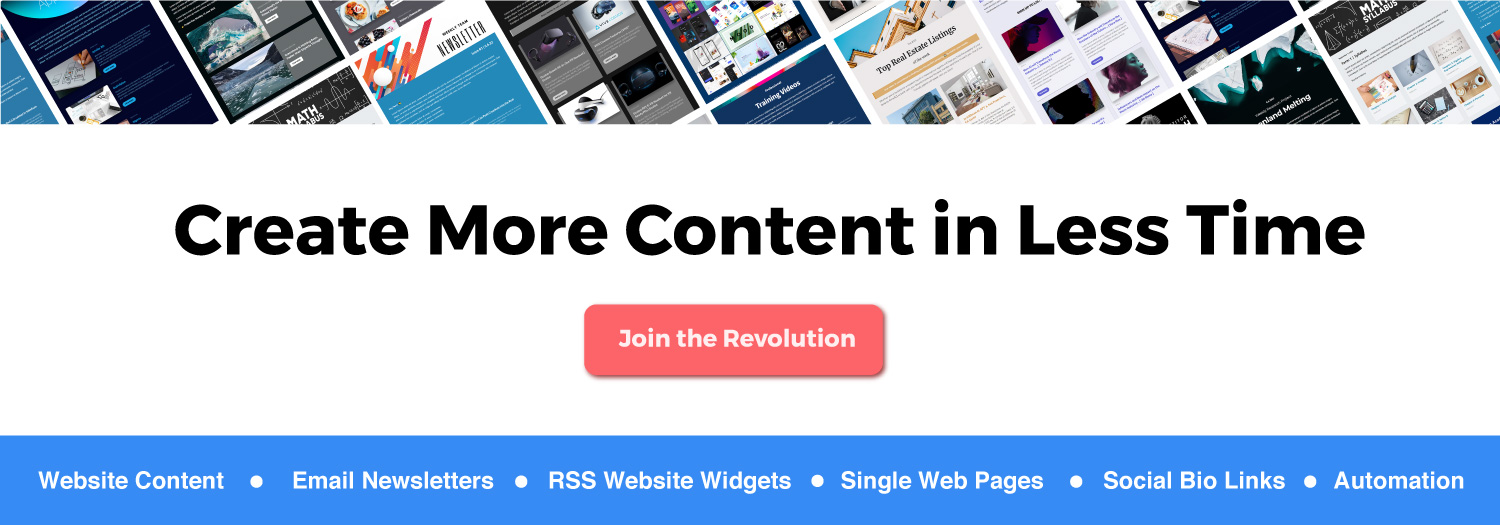We’re currently living in the age of information abundance.
From the consumer’s point of view, these are exciting times! However, from a marketer’s perspective, this new horizon comes with a plethora of challenges, including a cacophony of competitors.
So, to get the attention of potential customers and reach your goals, you need to start focusing on high-value accounts that matter the most. This concept is known as ‘account-based marketing.

Implementing an ABM strategy can help you improve your marketing ROI, drive revenue, generate more conversions, and most importantly, align sales with marketing.
Here are some stats that prove how awesome account-based marketing is:
- 97% of marketers achieved higher ROI with ABM than with any other marketing initiative. (Source)
- 84% of marketers say ABM strategies outperform other marketing investments. (Source)
- More than 70% of B2B marketers are ramping up ABM-specific programs, with having staff dedicated to account-based marketing. (Source)
The bottom line is, casting super-wide nets hoping to pull in as many leads as possible – doesn’t work anymore. You need to replace the net with a spear aka try your hands at account-based marketing.
In this blog, we are going to discuss everything you need to know about implementing an account-based marketing strategy. So without further ado, let’s get going!
What Exactly is Account-Based Marketing?
Account-based marketing is a marketing strategy in which marketing and sales teams collaborate to target the best fit accounts and turn them into customers.
With account-based marketing, you can weed out the less valuable companies early on, and create a personalized buying experience just for high-value accounts.
ABM is just like reverse-engineering the traditional marketing approach. In the traditional forms of marketing, you first filter out the bad leads and then end up with leads that are a good fit for you to sell to.
Whereas, with account-based marketing, you directly start with the target companies. You identify the companies that would get you the highest returns and then you proactively go after them.
Before we dive into the benefits of account-based marketing, we’d like to walk you through another important marketing tactic: inbound marketing.
More often than not, account-based marketing and inbound marketing are treated as completely different entities. However, when paired together, they are forces to be reckoned with.
Account-Based Marketing & Inbound Marketing
As you just learned, account-based marketing is a highly targeted strategy. Meanwhile, inbound marketing is all about attracting customers through insightful content, SEO, and a wonderful customer experience.
Unlike outbound marketing, which is more like interrupting your target audience, inbound marketing allows you to give your audience the information they need – when they need it.
What we’re trying to say is, inbound marketing can pave the way for a robust account-based marketing strategy. How? By providing efficient resource allocation of high-value accounts.
Like we said earlier, inbound marketing helps you attract the target accounts. ABM can then help you win those target accounts with an exceptional customer experience!
Moreover, with this blended marketing approach, you can attract a much wider group of prospects than you would if you used just one marketing tactic.
Not to forget, you can create and use content that serves both account-based marketing and inbound strategies – giving your content a two-for-one value!
We’re sure we have convinced you to give account-based marketing a try. Nevertheless, if you’re still looking for that final push, head over to the next section.
Read more: FOMO Marketing: Everything You Need to Know About It!
The 3 Benefits of Account-Based Marketing
1. Incredible Alignment Between Sales And Marketing

Marketers usually write and create campaigns for people in particular markets and industries, right? On the other hand, sales teams are more focused on engaging with just those accounts that are most likely to buy.
Well, with account-based marketing, both sales and marketing teams become a single unit. They are focused on accounts instead of individual leads, which leads to a powerful alignment between the two.
And, according to research, organizations with aligned sales and marketing teams see an average of 34% annual revenue growth. Whereas, less aligned companies see a 7% decline in growth!
2. More Efficient Use of Marketing Budget
When you follow the good old lead-based strategy, you spend many dollars to acquire as many leads as you can. Then, you qualify the best leads, wasting the money that you spent on leads that are unfit.
But, if you determine which accounts are the best for your product/service before going after them, you can save a lot of money. ABM is so targeted that there is almost no wastage of resources!
3. A Great Customer Experience
Customers aren’t looking for a sales call or a marketing email. They want to explore the available solutions on their own will and only receive messages that are meaningful and relevant to them.
So, instead of blasting your target audience with all types of content, you need to dig deep into their persona and design campaigns that are specifically tailored to them.
That’s what account-based marketing is all about. Every touchpoint along the buyer’s journey is personalized. The entire focus is on doing what’s most convenient for the stakeholders in the target organization!
Yes, account-based marketing is an excellent form of marketing. However, if you want to reap its benefits to the fullest, you need to start off on the right foot, and we’re going to help you with that.
How to Implement Account-Based Marketing? (Step-By-Step)

Step 1: Define Your Strategic Accounts
When it comes to account-based marketing, knowledge really is power. So, firstly, identify the organizations that bring you the highest long-term profits.
Why? Because these are the types of accounts you need to go after! You can partner up with your sales team to collect all the data, because who knows your customers and leads better than they do?
Step 2: Time to Investigate
Now, it’s time to team up with some strategic thinkers within your sales department. Once you’ve figured out the type of organizations you need to pursue, dig deeper to determine who are the key stakeholders there.
Basically, learn more about how decisions are made at your target organizations and who the decision-makers are. Then, start thinking about how you can influence these stakeholders.
Step 3: Create Personalized Content
Here comes the fun part: put all the data and knowledge you’ve gathered to use by creating content that speaks directly to the organization and its stakeholders.
To create content that hits the right spots, you need to understand the stakeholders’ pain points and try to solve them with your messages and visuals.
Remember, the beauty of account-based marketing is that it’s extremely personalized to the organizations, and this is why you need to create content that speaks to them!
Step 4: Select the Appropriate Channels for Your Campaigns
All your research, data, and content will go down the drain if you don’t promote your campaign in the right places. Find out which channels the stakeholders use and where they spend their most time online.
For example, if you are targeting a graphic designer, they might spend time on Pinterest. If you’re targeting a financial executive, you can show them targeted ads on websites like Bloomberg, Market Watch, etc.
Read more: What is Outbound Marketing & How Does it Work?
Step 5. Execute The Campaign
Yay! It’s finally time to actually run the campaign. But, there is something that you need to keep in mind before scheduling the frequency of your messages.
See, this method of marketing is extremely targeted. So, it’s important that you don’t bombard your target audience with repeated messages across multiple channels.
Simply put, don’t hit the same people with the same message repeatedly. Try to strike the right balance of catching your prospect’s attention without annoying them.
Step 6: Measure Your Results

Once your account-based marketing campaign is on the brink of ending, you can start measuring and evaluating the effectiveness of the campaign. Try to answer these questions:
- Did our target market find the content engaging? If yes, why?
- Did the accounts become more engaged with our brand?
- Were we able to move any of the targeted leads down the funnel?
- Did we have an increase in revenue after these campaigns?
- What can we do better next time?
If the results are not as awesome as you fancy, don’t be disheartened. Keep evolving and improving. Also, if account-based marketing yielded great returns for your business, keep doing it!
Wrapping Up
Yes, targeting a lot of people at once might make sense at first, but it can drastically reduce your ROI. Whereas, a targeted approach like ABM can boost your revenue, optimize your efforts and increase customer loyalty.
Moreover, as account-based marketing is focused on investing your time and money only on promising, high-value accounts, it helps you to distribute your resources more efficiently!
We know that there’s a lot to digest here, so if you’ve got any questions, suggestions, or concerns, hit us up on Twitter @elink_io. We would be happy to help you!
Further reads:
Referral Marketing: Everything You Need to Know About it!
Drip Marketing: What is it & How to Do it?
Meme Marketing: Definition, Tips & Examples!







